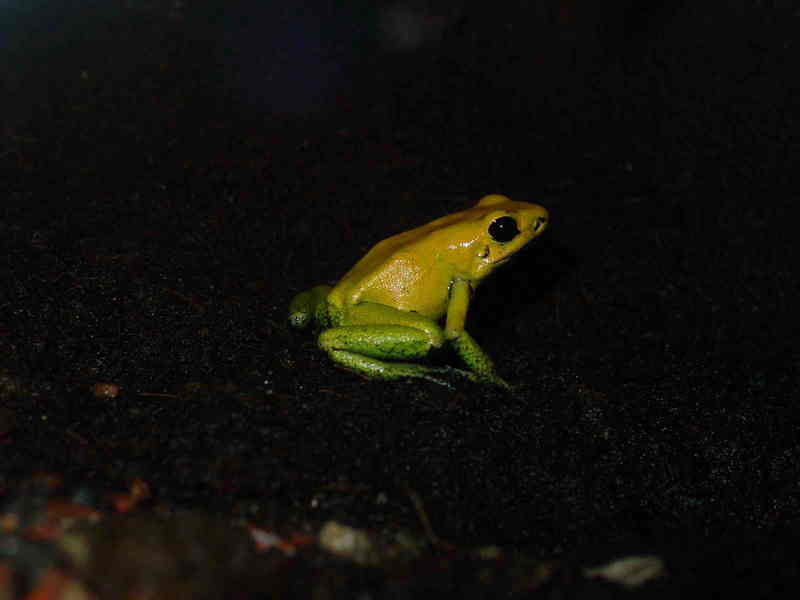Black-legged Dart Frog (Phyllobates bicolor) - Wiki Black-legged Dart Frog
From Wikipedia, the free encyclopedia
[Photo] Black-Legged Poison Dart Frog (Phyllobates bicolor). Date: 9 April 2004. Author: Luis Miguel Bugallo S??nchez (http://gl.wikipedia.org/wiki/User:Lmbuga)
The Black-legged Dart Frog (Phyllobates bicolor), also known as the bicolored dart frog or Neari in Choco, is the second most toxic of the wild poison dart frogs. This species obtained its name due to its normally yellow or orange body with black or dark blue hindlegs and forelimbs below the elbow. It lives in the lowland forests in the Choc?? area in western Colombia, along the San Juan river, although some populations lives further South in Quebrada Guangui. The frogs from Quebrada Guangui bear a striking resemblance to the yellow or orange forms of Phyllobates terribilis, and are sometimes confused for them by hobbyists.
In this species, the male transports tadpoles adhering on its back.
Toxicity
While it is weaker than P. terribilis, Phyllobates bicolor is still a highly toxic animal. Just 150 micrograms of its poison is enough to kill an adult human. This frog is often heated over a flame to make it "sweat" the liquid poison for hunting darts. The poison causes death by respiratory and muscular paralyisis. Research is being conducted to determine medicinal uses for this batrachotoxin. As with all dart frogs, captive-raised individuals are not toxic----the animals require chemicals found only in their wild food sources, mainly insects. In captivity, these chemicals are not available to them from their food source.
Captive Care
Care for P. Bicolor is similar to Phyllobates terribilis, except P. bicolor can be kept in a slightly smaller enclosure. Both males and females of this species can be vocal.
http://en.wikipedia.org/wiki/Black-legged_Dart_Frog
| The text in this page is based on the copyrighted Wikipedia article shown in above URL. It is used under the GNU Free Documentation License. You may redistribute it, verbatim or modified, providing that you comply with the terms of the GFDL. |
